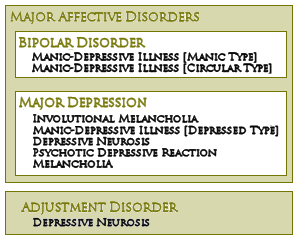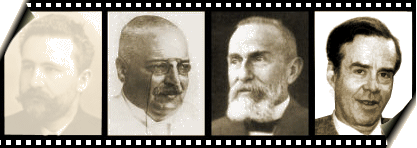DSM-III [Introduction p. 6]: "In DSM-III there is no assumption that each Mental Disorder is a discrete entity with sharp boundaries [discontinuity] between it and other mental disorders, as well as between it and No Mental Disorder. For example, there has been a continuing controversy as to whether or not severe depressive disorder and mild depressive disorder differ from each other qualitatively [discontinuity between diagnostic entities] or quantitatively [a difference on a severity continuum]. The inclusion of Major Depression With and Without Melancholia as separate categories in DSM-III is justified by the clinical usefulness of the distinction. This does not imply a resolution of the controversy as to whether or not these conditions are in fact quantitatively or qualitatively different."
Recall that Melancholia was a 5th digit add-on to major depressive episode. That doesn’t seem like a separate category to me [296.22 and 296.23]:
3- With Melancholia
A. Loss of pleasure in all or almost all activities
B. Lack of reactivity to usually pleasurable stimuli [doesn’t feel much better, even temporarily, when something good happens].
C. At least three of the following:
[a] distinct quality of depressed mood, i.e. the depressed mood is perceived as distinctly different from the kind of feeling experience following the death of a loved one
[b] the depression is regularly worse in the morning
[c] early morning awakening [at least two hours before usual time of awakening]
[d] marked psychomotor retardation or agitation
[e] significant anorexia or weight loss
[f] excessive or inappropriate guilt
So Melancholia got buried. Likewise, saying "whether or not severe depressive disorder and mild depressive disorder differ from each other" reveals his [or somebody’s] actual opinion ["severe" and "mild" sure sound like a severity continuum to me]. "This does not imply a resolution of the controversy as to whether or not these conditions are in fact quantitatively or qualitatively different" is in the range of a "non-denial denial."
As the name implies, Melancholia [‘black bile’] has been recognized since the dawn of recorded time – sometimes as profound mourning, sometimes as a pathological state, and sometimes as a physical disease. Karl Abraham and later Freud pointed to a continuum between mourning and melancholia by suggesting that the latter was a different kind of grief – a loss in fantasy rather that in fact. But in their formulations, the basic reaction [physical and emotional symptoms] were biologic – a built in human reaction to loss. There is no course in psychoanalytic training that addresses "Neurotic Depression" – depression is just a symptom. And Melancholia proper is certainly not in the domain of clinical psychoanalysts [or for that matter, any other psychotherapy disciplines]. When Kraepelin came along and noted the periodicity of people with affective [mood] illnesses, he created a class, Manic Depressive Illness, with subclasses – recurrent Mania, recurrent Depression, and recurrent episodes of both. That way of thinking continued in both DSM and DSM-II.
DSM [1952]:
• 000-xll Manic depressive reaction, manic type:
• 000-xl2 Manic depressive reaction, depressed type:
• 000-xl3 Manic depressive reaction, other:
DSM-II [1968]:
• 296.1 Manic-depressive illness, manic type:
• 296.2 Manic-depressive illness, depressed type:
• 296.3 Manic-depressive illness, circular type:
Likewise, there was another kind of depression – precipitated by a life event or an internal conflict. It came in two flavors separated by the presence of psychotic symptoms:
DSM [1952]:
• 000-x06 Depressive reaction:
• 000-xl4 Psychotic depressive reaction
DSM-II [1968]:
• 300.4 Depressive neurosis
• 298.0 Psychotic depressive reaction:
And where was Melancholia? What was Melancholia? Clinically, it’s a discrete syndrome:
• profoundly depressed mood
• no convincing precipitant
• changes in appetite
• changes in sleep
• loss of interest in life [and perhaps living]
Psychosis is sometimes there and sometimes not. The psychotic symptoms, if seen, are usually mood congruent – "I’m rotting inside." If the patient had had it before, or had been Manic before, people were comfortable calling it Manic-depressive illness and giving it a subtype name. If the patient was old, it was called Involutional Melancholia. If the patient was new mother, it was called Post-partum Depression. But what if it was an isolated occurrence? Was it the first instance of a Manic-depressive illness? That’s the way we thought of a new case of Mania, but not of Melancholia because there are patients who present with this syndrome as a one shot deal – and don’t go on to have recurrent episodes [at least that’s the way I thought of it]. And no convincing precipitant is the usual part of the story. So in the DSM and DSM-II, patients with Melancholia were orphans [and pretty sick orphans at that].
DSM-III [Introduction p. 7]: "The major justification for the generally atheoretical approach taken in DSM-III with regard to etiology is that the inclusion of etiological theories would be an obstacle to the use of the manual by clinicians of varying theoretical orientations, since it would not be possible to present all reasonable etiologic theories for each disorder"…
"Because DSM-III is generally atheoretical with regard to etiology, it attempts to describe comprehensively what the manifestations of the mental disorder are, and only rarely attempts to account for how the disturbances come about, unless the mechanism is included in the definition of the disorder. This approach can be said to be ‘descriptive’ in that the definitions of the disorders generally consist of descriptions of the clinical features of the disorders"…
So the charge to the DSM-III Committee was to eliminate theory [like psychoanalysis] and stick to the facts, categorizing mental illness by observable criteria – symptoms and course [family history didn’t count as observable for reasons unknown to me]. Here’s what they came up with. I’ve left out the "other specific" and "atypical" categories because I don’t understand them and/or they felt like wastebaskets]:

They explain the move of Manic-Depressive Illness [Depressed Type] as follows:
It is estimated that over 50% of individuals with a Major Depression, Single Episode, will eventually have another major depressive episode, thus meeting the criteria for Major Depression, Recurrent. Individuals with Major Depression, Recurrent, are at greater risk of developing Bipolar Disorder than are those with a single episode of Major Depression.
So people with Bipolar Disorder had to have a manic episode somewhere along the way, otherwise they stayed in the Major Depression category. They added some other distinctions in their narrative:
Most individuals who have a disorder characterized by one or more manic episodes [Bipolar Disorder] will eventually have a major depressive episode.
In Bipolar Disorder the initial episode is often manic. Both the manic and the major depressive episodes are more frequent and shorter than the major depressive episodes in Major Depression.
Involutional Melancholia, a syndrome I thought was pretty solid myself [an anxious, agitated depression in late life], apparently was not different enough and didn’t make the cut. I guess it died from old age. Both Depressive Neurosis and Psychotic Depressive Reaction were doomed on two fronts – Freud’s psychoanalysis and Meyer’s psychobiological "reactions" – and died ideological deaths [Depressive Neurosis Lite became an Adjustment Disorder]. The orphan, Melancholia, and people with depression that had psychotic symptoms became add-ons in Major Depression [see above].

By my read, the old men of psychiatry’s ranks were dramatically thinned by the DSM-III. While the framers saw themselves as going back to the classification of Emil Kraepelin, it wasn’t the Kraepelin that I knew [maybe he was a cousin from Saint Louis?]. Based on symptoms, course, and family history, Kraepelin had proposed an illness that presented with episodic pathological emotional states [that appeared to run in families]. The DSM-III deconstructed it into Bipolar Disorder – the Mania of old, with only a flavoring from the old Kraepelin. Freud and Meyer had theorized about the mind and life in mental illness and were removed as just that – theorists. Alois Alzheimer’s demonstrable brain disease, presenile dementia, survived as did Eugen Bleuler’s post-Kraepelin version of the many facets of Schizophrenia.
All of the depressive syndromes drifted into one category. Major Depression became the orphanage for those de-parentified depressions. As we will see later, the various depressive syndromes would make a few attempts at a come-back as the DSM-III was revised, and new versions would come and go, but the changes made by Robert Spitzer’s surgery on depressive illness in 1980 remain the primary paradigm to the present. There was a new face in the clouds after 1980:

How did what began as a war on ideology escalate into a war on the clinical syndromes? Specifically, why did Melancholia become part of the chorus rather than a soloist? Now, thirty years later, those questions remain center stage, joined by the host of confusing consequences that arose from those decisions…
It is self-referential beyond belief for me to call attention to my own stuff rather than speaking in some distant voice. But those who seek answers to Dr Nardo’s question about how melancholia morphed into “major depression” will find a rather tedious reconstruction of these events in my book Before Prozac, which Oxford published several years ago. I had access to the original correspondence of the DSM-III Task Force, and was able to describe how the disaster that Dr Nardo describes above so ably, actually took place.
Edward (Ned) Shorter
Dr. Shorter,
Thanks for the comment. The book is actually in transit from my library in the sky [Amazon.com] as we speak.
The denigration of “melancholia” to a “specifier” put the diagnosis outside the diagnostic main stream. The surprise was the rejection of hypercortisolemia to distinguish melancholic from non-melancholic mood disorders. By 1980, the studies confirming this finding filled the literature; surely by 1994 the rejection was unjustified despite the 1986 pontification of the APA task force (Glassman). That cortisol was not a measure of DSM-III Major Depression is not surprising since the criteria are so broad.
The role of cortisol in defining melancholia and the sordid story has been documented in “Endocrine Psychiatry” (OUP 2010).
In a query to the DSM5 Mood Disorders Work Group on May 6, asking the status of Melancholia in the proposed classification, William Coryell answered:
Hi Max–We are not proposing any revision of the melancholia criteria. We
did consider the proposals from your group but these would have required
major shifts in the boundaries for major depression and the evidence to
support such a shift was judged insufficient for a changes of this
magnitude.–Bill
Sadly, the 1980 criteria are now etched in stone.
Max Fink
“boundaries for major depression” is a phrase for pondering. There aren’t any…